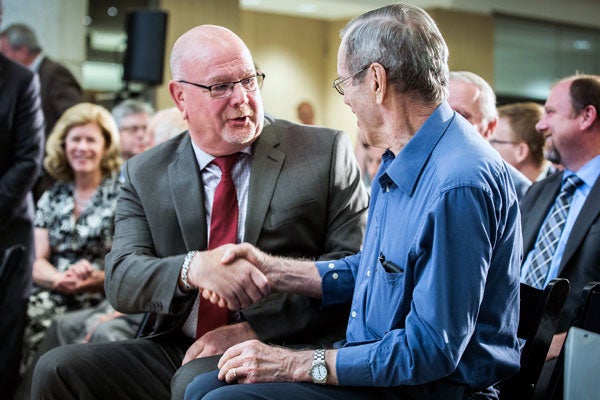
How stem cell research and regenerative medicine saved this man's life
Published: July 28, 2015
Jonathan Furneaux flew in from St. John’s for a news conference at the University of Toronto July 28.
But just 18 months ago he was sure he would not be alive to see the day.
Furneaux, 46 says he is a “living example” of the regenerative organ research being done at the University of Toronto and its partner hospitals. Diagnosed with lung disease five years ago, he ended up on oxygen 24 hours a day, “using all of my body’s energy just to breathe.”
In January of last year before he left home in Newfoundland, “I looked out the back window and said, I’m not coming back here anymore. I’m not going to make it.”
He and his wife moved to Toronto and he was put on a waiting list for a transplant. He got lucky and 28 days later got notice of his double lung operation. His wife pushed him into Toronto General Hospital in a wheelchair and 12 days later “I walked out of the hospital, no oxygen, no wheelchair. I could breathe again.”
The donor lungs he received were treated by surgeons working under Dr. Shaf Keshavjee at Toronto General, using the “ex vivo” (outside the body) method of repairing lungs. This method of treating and repairing lungs by the ex-vivo lung profusion system has led to a 28 per cent increase in lung transplants at the hospital.
“I am living proof of the research you are doing right here in Toronto,” Furneaux said at the end of the announcement of $114 million in federal funding for regenerative medicine research at U of T and its partner hospitals. (Read more about Medicine by Design.)
“I can live again, dance with my wife, or do simple things like blowing up balloons, but most of all I can breathe again.”
Keshavjee, a U of T professor and scientist at the McEwen Centre for Regenerative Medicine, is the lead investigator for the Organ By Design pillar of the Medicine by Design initiative. He and his team have performed more than 200 “ex-vivo” (out of body) repairs.
“Now we are going to be expanding that to other organs,” Keshavjee said. “We have done the first two ex-vivo liver cases, and we want to extend that to heart and kidneys.”
The funding announced on July 28 will mean more equipment and technology to build the ex-vivo perfusion platforms for all organs, he said, and research funds to develop gene and cell therapies to repair organs. It will also help attract new scientists and allow the U of T to disseminate valuable information around the world.
“The whole project is about different repairs we can use to create super organs – molecules by design, cells by design, tissues by design and then organs by design– ultimately we will create super organs that will perform better than the ones we found” inside the body.
Read more about Medicine by Design.
Read a Q & A with U of T researchers Peter Zandstra and Molly Shoichet.



